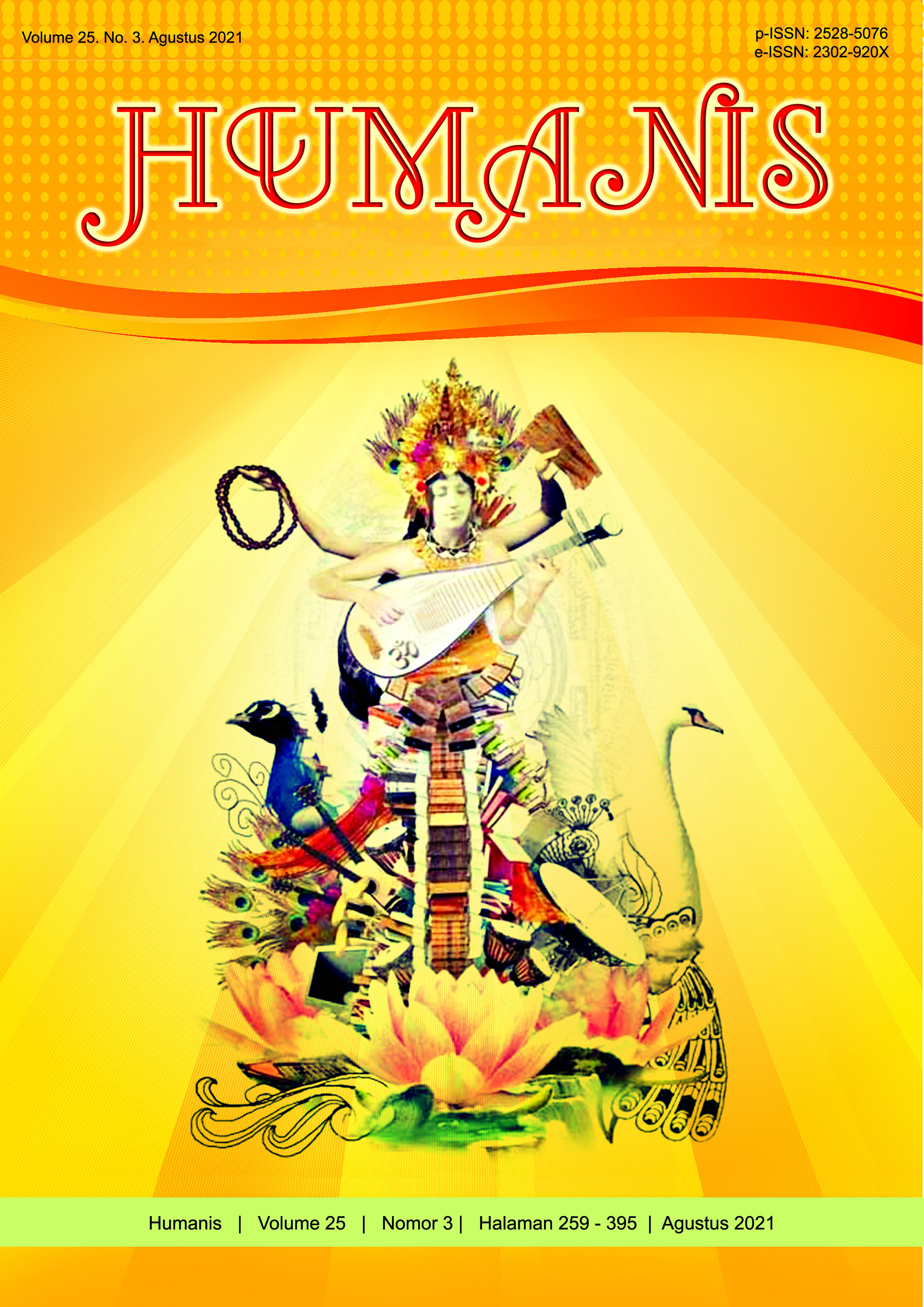A Study of Meaning and Messages With Reference to the Novel Rage of Angel
Abstract
This study was aimed to identify and analyze the meaning and message in several sentences found in the novel Rage of Angels by Sidney Sheldon published in 1980. The selected sentences in the novel, which are the data of this study, were collected by applying the documentation method and note-taking technique which then were analyzed using the descriptive qualitative method. The data were presented informally in descriptive form. This study analyzes the types of meaning based on the theory proposed by Leech (1974) and the messages of the novel based on the biographical approach theory by Wellek and Warren (1962). As a result, all the seven types of meaning, namely connotative meaning, conceptual meaning, affective meaning, stylistic meaning, reflected meaning, collocative meaning, and thematic meaning, were found in the novel. In relation to the message of the novel, based on the biographical approach, there were five messages that the author delivered.
Downloads
References
Berger, A. (1982). Media analysis techniques. Beverly Hills; Sage Publications.
Halliday, M.A.K., and Ruqaiya Hasan. (1985). Language, Context and Text: Aspect of Language in a Social Semiotic Perspective. Australia, Deakin University, Victoria
Harfiza. (1997). Semantics: Words without Meaning is Meaningless. UKM.
Hook, J.N. (1989) The Quite Virtue Speaks: An Intervation To Promote Humility. Journal of psychology and theology 71 (1)
Hornby, A. S., & Cowie, A. P. (1995). Oxford advanced learner's dictionary (Vol. 1430). Oxford: Oxford university press.
Ladusaw, W. (2019). Meaning (Semantics and Pragmatics). Linguistic Society of America. Online. Retrieved on September, 1, 2019.
Leech, Geoffrey. (1974). Semantics. Penguin Books, Auckland.
Leech, Geoffrey. (1981). Semantic the Study of Meaning. Penguin Books, London.
Lyons, J. (1995). Language and linguistics. Cambridge University Press.
Abdallah., M.A. and Saeed, A.A.M. (2015). Going Beyond The Conventions: The Connotative of Setting in Thomas Hardy’s The Return of the Native.
Nordquist, R (2018). Message verbal and non-verbal. [internet] Available from: http//www.thoughtco.com/verbalnon-verbalmessagelanguage.
Palmer, I.R. 1981. Semantics. Cambridge University Press.
Pramedio, L.K.Y. (2009). Analysis of Poetic Devices of the Song Lyric in the album Back to Bedlam by James Blunt. Denpasar: English Department, Faculty of Letters, Udayana University
Prayitna, N. (2015) An Analysis on Connotative Meaning and Message in Linkin Park’s Songs in a Thousand Suns Album. Undergraduate thesis: Brawijaya University.
Saifuddin, F. (2018). Denotative and Connotative Meaning of Signs in Lombok Musical Instrument (Gendang Beleq). International Journal of English Literature and Social Sciences, 3(1), 239275.
Sari, Ariska & Kusumawardhani, Paramitha. (2016). Denotative and Connotative Meaning in One direction’s Songs Lyric: A Semantic Perspective. ELT-Lectura, 3(2).
Sheldon, S., & York, S. (1980). Rage of Angels. Warner Books.
Wellek, R. & Warren, A. (1962). Theory of Literature. Harcout, Brace & World New York.
Widarso, W. (1989). Bahasa Inggris: Dialek, Ragam, Jargon, Slang, Blends, Clipped Words. Jogjakarta: Kanisius
Zulaichah, S. (2008). Connotative and denotative meanings on the lyrics of Tina Arena’s songs. Undergraduate thesis, Universitas Islam Negeri Maulana Malik Ibrahim.


















